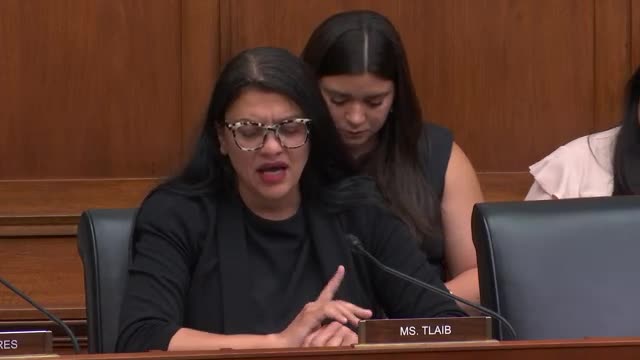Housing crisis deepens as mortgage costs soar
July 25, 2024 | Financial Services: House Committee, Standing Committees - House & Senate, Congressional Hearings Compilation

This article was created by AI summarizing key points discussed. AI makes mistakes, so for full details and context, please refer to the video of the full meeting. Please report any errors so we can fix them. Report an error »

In a recent government meeting, officials discussed pressing issues surrounding housing affordability and new energy standards, highlighting the challenges faced by homeowners and renters alike.
One key topic was the introduction of new energy standards aimed at reducing energy costs for residents. Officials noted that while a single-family homeowner might see an increase in their annual mortgage payment of approximately $247, they could save around $751 annually on energy bills, translating to savings of over $14,000 over the lifetime of their property. For families living in low-rise multifamily units, the potential savings could reach up to $314 per year. These standards, driven by the USDA and EPA, are expected to improve the financial health of low-income households, particularly those served by HUD's Section 202 program, which often have annual incomes just above $16,000.
The meeting also addressed the broader housing crisis, with representatives emphasizing the severe shortage of affordable housing. Current estimates suggest that the nation is over 6.5 million housing units underbuilt, exacerbated by rising mortgage rates and ongoing supply chain issues. In regions like Rockland and Westchester counties, the monthly cost of a mortgage has surged by $1,000 compared to last year, placing additional financial strain on families.
The discussion highlighted the \"lock-in effect,\" where homeowners with low fixed-rate mortgages are reluctant to sell, fearing they would lose their favorable rates in a market where new buyers face interest rates nearing 8%. This phenomenon has led to a significant decrease in the availability of existing homes for sale, pushing potential buyers into the rental market and driving up rental prices.
Moreover, the meeting revealed that new apartment construction has plummeted by at least 35% this year, further limiting rental options. The rising cost of capital due to increased interest rates has made it financially unfeasible for developers to build new properties, compounding the existing supply issues.
As officials called for collaboration among government agencies, nonprofit organizations, and the real estate sector, the urgency of addressing these housing challenges was clear. The discussions underscored the need for innovative solutions to ensure affordable housing remains accessible to all, particularly in the face of rising costs and economic pressures.
One key topic was the introduction of new energy standards aimed at reducing energy costs for residents. Officials noted that while a single-family homeowner might see an increase in their annual mortgage payment of approximately $247, they could save around $751 annually on energy bills, translating to savings of over $14,000 over the lifetime of their property. For families living in low-rise multifamily units, the potential savings could reach up to $314 per year. These standards, driven by the USDA and EPA, are expected to improve the financial health of low-income households, particularly those served by HUD's Section 202 program, which often have annual incomes just above $16,000.
The meeting also addressed the broader housing crisis, with representatives emphasizing the severe shortage of affordable housing. Current estimates suggest that the nation is over 6.5 million housing units underbuilt, exacerbated by rising mortgage rates and ongoing supply chain issues. In regions like Rockland and Westchester counties, the monthly cost of a mortgage has surged by $1,000 compared to last year, placing additional financial strain on families.
The discussion highlighted the \"lock-in effect,\" where homeowners with low fixed-rate mortgages are reluctant to sell, fearing they would lose their favorable rates in a market where new buyers face interest rates nearing 8%. This phenomenon has led to a significant decrease in the availability of existing homes for sale, pushing potential buyers into the rental market and driving up rental prices.
Moreover, the meeting revealed that new apartment construction has plummeted by at least 35% this year, further limiting rental options. The rising cost of capital due to increased interest rates has made it financially unfeasible for developers to build new properties, compounding the existing supply issues.
As officials called for collaboration among government agencies, nonprofit organizations, and the real estate sector, the urgency of addressing these housing challenges was clear. The discussions underscored the need for innovative solutions to ensure affordable housing remains accessible to all, particularly in the face of rising costs and economic pressures.
View full meeting
This article is based on a recent meeting—watch the full video and explore the complete transcript for deeper insights into the discussion.
View full meeting